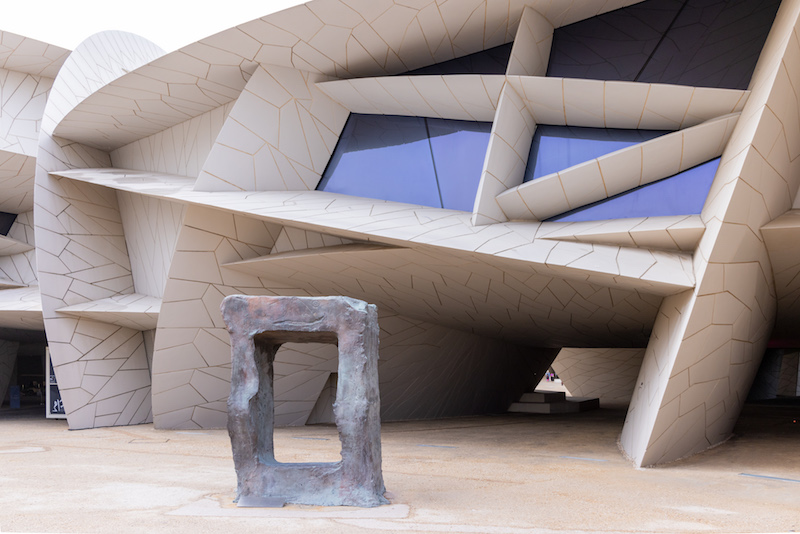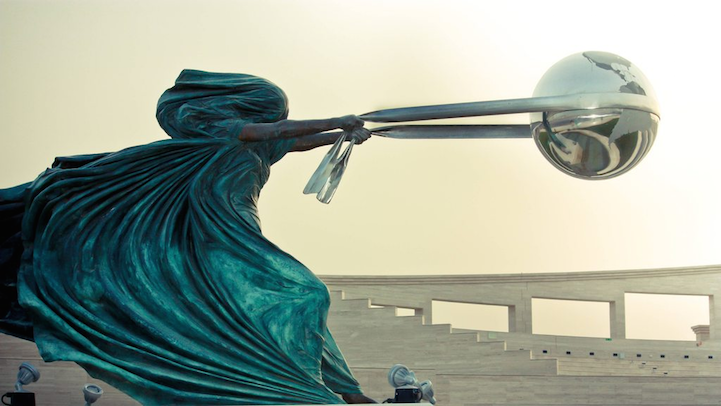Human reliance on nonhuman phenomena is a topic many environmental humanities thinkers address in their work. In “After Oil”, the Petrochemicals Group makes the claim that contemporary human societies are “oil societies shaped by physical and material ways” (9). The article contends that the use of fossil fuels significantly impacts and alters human behaviour and attitude toward both human and nonhuman entities, including their beliefs and sentiments toward these phenomena. On a physical and material level, petroculture is intrinsically linked to human existence; the commodity profoundly influences our existence in many aspects, whether it be social, economic, or behavioural. We reside in a fossil fuel dominated society which illuminates global inequality, being a major contributor toward regional poverty depending on the ‘petroculture’ states that exercises temporary power over nature’s finite resources. In contemporary society, the commodity exercises enormous control over human behaviour and interaction toward other human and nonhuman beings. In the particular case of public art installations in Qatar, I have previously contended in my blog posts that the state’s rapid transition from a traditionalist-poor to an oil-rich economy has seen it become estranged from its natural roots in a bid to forge a materialistic relationship with its natural resources. In this final brief, I aim to examine the impact of economic development on Qatar’s social and cultural landscape. To support my claims, I will offer a more in-depth analysis of two prominent public art installations based in Qatar – “Gates to the Sea” and “On their Way”. With the illustration of these sculptures, I will be assessing whether or not the progress in Qatar’s present economic milieu has deteriorated the state’s relationship with its traditional customs and nature. Is Qatar, in a desperate attempt to hold onto their roots, forging an artistic route back to its natural origins in the guise of showcasing relevant art? This also begs the following question: is a state so heavily dependent on petroculture really striving to retain its pre-petromodern roots? Or are these art installations mere showpieces installed to alleviate the guilt toward Qatar’s fading identity?
According to The Petrocultures Research Group (2015), natural commodities worth high monetary value plays a pivotal role in shaping human values, practices, habits, beliefs, and feelings (9). As a result, human beings become ‘a petroculture’ in and of themselves. Thus, by virtue of its identity, the state of Qatar in itself is a petroculture. Bergthaller (2017) presents this concept by metaphorising oil-rich economies as addicts and then raises the question of the social and cultural cost petromodernity holds for these states given their excessive dependency on oil (424).
To begin my argument, I would like to argue that Qatar, despite its tremendous economic standing today, has not become alienated from the nature that birthed it. The Petrocultures Research Group highlights that a country needs to transform and transition its cultural and social values parallel to its economic development. With reference to Fattal’s “Gates to the Sea” (depicting a rectangular-shaped time portal reflecting the swift shift in the country’s social and economic milieu), it can be claimed that Qatar stands firm with its ties to its past. The rectangular shaped sculpture stands tall in front of the Qatar National Museum, accentuating the notion that anyone and everyone can step through the time portal at any time to experience Qatar’s history. The artpiece implies that it is easy to immerse oneself into Qatar’s traditional ways of life because the country still maintains close ties with its past. Furthermore, it is accurate to contend that in contemporary society, economically troubled economies such as Qatar which suffered financially had to develop in all aspects in order to maintain parity with the rest of the world. The previous argument made by the Petrocultures Research Group stands firm, because without social and cultural development, a country might be doomed to underdevelopment and poverty.
Additionally, with reference to the sculpture “On Their Way” illustrating one of the most important nonhuman elements present in past and present Qatari culture – camels – I would again like to emphasise that although standing in the fast lane toward economic success, Qatar still stands loyal to its roots. The portrayal of the four camels (two calves and two mature) can be seen accentuating this standpoint. The two calves represent the modern Qatar – the petroculture state – while the two mature camels may be seen representing the country’s past relationship with its natural, nonhuman phenomena which the country clearly continues to cherish. Additionally, there are two main perspectives from which one might observe the sculpture: one from which the camels are walking forward and another in which they are remaining still. Again, the former perspective showcases Qatar’s economic prosperity as it preserves its roots. Similarly, the latter hints at the country’s commitment to staying firm on its cultural and social values. Both cases represent Qatar’s present relation to its past.
On the contrary, I would like to present the argument of Qatar’s inability or unwillingness to maintain a connection to its past cultural identity. The Petrocultures Research Group states that oil is merely a source of energy, but also a deeply ingrained social phenomenon (17). Oil is a social factor as much as it is a natural resource, playing an influential role in shaping our social and cultural identities. Although one may contend that either a positive or negative effect could result from this, for the purpose of this argument I will be assuming that the outcome is largely unfavourable due to Qatar’s continued economic development but disregard for its historical characteristics. Therefore, one may wonder why there lies so much representation of the traditional past when Qatar has been drifting away from it both socially and economically. What interests do these artworks really serve? Are they a reminder of Qatar’s past, or have they been established solely on the basis of alleviating Qatar’s guilt toward betraying its customs and traditions?
One may claim that Qatar is actively installing public artwork purely as showpieces to veil its abandonment of the nature and customs that had once supported it in favour of petro-modern culture. As the state’s natural environments and customs continue to diminish in contemporary Qatari society, the past is increasingly being showcased through sculptures and other art forms; the country is creating a synthetic relationship with its past to maintain a connection to its origins, but how long can reality be dismissed? The reality that, given the rate of growth, how long will Qatar actually care enough to preserve the past, when the present and future looks so promising? Both the artworks under examination suggest that Qatar cares more about the petrocultural present than the past, representing their increasing neglect toward their customs and traditions.
Furthermore, although Qatar might have gained freedom in the sense that it does not possess the need to heavily rely on foreign imports and lending, Bergthaller doubts this freedom and self-reliance if it relies on something other than the self (425). Qatar may no longer be dependent on other countries, but at what social cost? It may be flourishing economically, but the state is paying a high social cost in that it is, as Bergthaller phrases it, losing its ‘self’ in regard to its past relationship with its surrounding nature and nonhuman entities.
Additionally, the Petrocultures Research Group also puts forth a critique toward the future of economies booming on the basis of their reliance on oil. The repercussions on economies, like Qatar’s, will be inevitably destructive; the most detrimental consequence of their reliance on oil continues while humans stay oblivious to their estrangement from their roots and becoming dominated by fossil fuels which will have vast social and cultural implications when the oil runs out. Thus, given that Qatar is on the verge of completely transforming into a ‘petroculture’ in the coming years, the question of what the state will hold as its economic identity when the oil runs out? Although the government is fully aware of the consequences arising from this, the argument stands whether Qatar is doing enough to detach itself from its petrocultured identity.
The Petrocultures Research Group also asserts that if one is to envision a society after oil, it needs to first comprehend the current consequences oil is having on human lifestyle (15). I believe that this is a predicament Qatar desperately needs to contemplate and act upon because it will go on to have generational repercussions in all facets of human lifestyle, whether it be social, cultural or economic. Extensive human reliance on nature’s resources is hardly bound to end well, considering the extent of human exploitation against nature.


